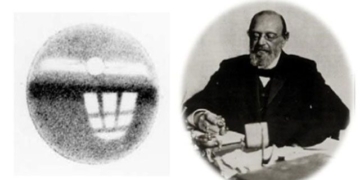Uterine Inflammation in Breeding Cattle: A Major Impact on Livestock Productivity
Uterine inflammation in breeding cows and buffaloes significantly affects the animals’ production capabilities, leading to issues such as reduced milk yield, delayed return to estrus, infertility, and overall decreased productivity. In severe cases, this condition can result in permanent infertility.
 |
(Image: astro.uiuc) |
The uterus is the reproductive organ in female buffaloes and cows, serving as the pathway for sperm to meet the egg, nurturing the embryo during development, and expelling the fetus during birth. The balance of estrogen is crucial for preparing the uterine lining to receive the fertilized egg and for the early stages of embryo development. The uterine lining secretes various hormones corresponding to different stages of the reproductive cycle (endocrine cells).
Causes
The degeneration, death of embryos, failure to conceive, dead sperm, and delayed estrus postpartum are primarily caused by two factors:
– Dysfunction of the endocrine system and physiological disorders of the uterine tissues, particularly the endometrium.
– Invasion by various types of bacteria and viruses.
Endocrine disorders such as increased folliculin in the blood and imbalanced progesterone levels are factors that can lead to uterine inflammation. Generally, during estrus, at the appropriate luteal phase, conditions are conducive for bacterial invasion. Endocrine disorders and pathological changes in the uterine tissues provide favorable conditions for bacteria to invade, survive, proliferate, and cause disease.
Difficult births, inadequate care, poor hygiene during the recovery period after birth, retained placenta, cervical dilation, the presence of impurities in the vagina, and unsafe, unclean procedures involving the insertion of instruments into the cervix are all conducive to the invasion and development of pathogens, leading to inflammation.
Bacteria causing uterine inflammation can vary; some are specific pathogens such as those causing tuberculosis, infectious abortion, and miscarriage, while others are non-specific pathogens such as Staphylococcus and bacteria from the rectum.
Symptoms
The symptoms manifest differently depending on the type of bacteria, the level of bacterial development and activity, and the functional and endocrine disorders of the uterus. The classification of symptoms can be categorized as follows:
1. **Endometritis Level 1 (Simple Catarrhal Inflammation)**
Animals show normal estrus behavior, with discharge possibly containing white flakes in the mucus, and the mucus appears inconsistent. The cervix may be swollen, and upon rectal examination, it is challenging to differentiate between a healthy uterus and one affected by inflammation.
2. **Endometritis Level 2 (Purulent Catarrhal Endometritis)**
Animals exhibit abnormal estrus behavior, with purulent mucus present, and the cervix is either dilated or slightly open and congested. The uterine horns may be curved and thickened, while the ovaries appear normal, possibly with pathological luteal tissue.
3. **Endometritis Level 3 (Purulent Endometritis)**
Animals cease reproductive activity, with pus discharging, especially when lying down. The cervix is swollen and open, covered with white or yellowish discharge, and the vaginal mucosa is congested. Rectal examination reveals enlarged uterine horns and thickened uterine walls, particularly in older cows and buffaloes, with pathological luteal tissue potentially present.
Endometritis Level 3 often presents with cervical inflammation and vaginitis, indicating that not only the endometrium is physiologically disturbed and damaged, but also the smooth muscle layer is inflamed.
Purulent Endometritis
Animals may not exhibit estrus and can be mistaken for being pregnant, though they rarely display clinical symptoms. There might be instances of pus discharge. Vaginal examination may reveal a lengthened vagina towards the abdominal cavity due to the weight of the pus-filled uterus. The cervix may be sealed with purulent fluid, resembling pregnancy, or covered with mucus and pus. Both the cervix and vagina are inflamed, and a rectal examination shows increased size and volume of the uterine horns. The degree of uterine descent into the abdominal cavity varies depending on the amount of pus accumulated (with some cases containing 20-25 liters of pus). During examination, it may appear that the animal is pregnant; however, there is no evidence of pregnancy, no fetal membranes, and no detectable heartbeat in the uterus, while the ovaries may show pathological luteal tissue.
Treatment
The treatment for uterine inflammation depends on the type of inflammation and its severity, requiring timely and appropriate intervention to eliminate the pathogens and restore uterine function. If specific pathogens (such as tuberculosis or infectious abortion) are present, systemic treatment alongside uterine inflammation management is essential.
Endometritis Level 1:
Irrigate with a 1.5-2% Lugol’s solution (dosages may vary based on the manufacturer, so refer to labels) to flush the uterus, repeating after 5 days. The Lugol’s solution should be administered to each uterine horn, 50-60 ml per horn. It is advisable to use 500-1000 ml of Lugol’s solution for the cervix and vagina. Generally, for endometritis at this level, simply injecting and retaining the 1.5-2% Lugol’s solution often yields positive results. Alternatively, Lugol can be replaced with 1,000,000 IU of Penicillin and 1 gram of Streptomycin dissolved in 100 ml of distilled water and injected into both horns.
Purulent Catarrhal Endometritis:
Irrigate with 2% Lugol’s solution: 100 ml for both horns. Vagina: 500-1000 ml. Alternatively, inject 1,000,000 IU of Penicillin and 1 gram of Streptomycin dissolved in 100 ml of distilled water into the uterus, or use 1 gram of Tetracycline with 100 ml of distilled water for uterine injection.
If treatment occurs during estrus, the results are often better due to the higher resistance of the animal. Administer PGF2α to break down the luteal body, which helps the animal recover quickly and return to estrus.
For purulent endometritis, treatment is similar to that for purulent endometritis, but the uterus should first be flushed with 1% Lugol’s solution or 3% Rivanol, or use a 3-5% saline solution to remove pus before retaining Lugol or antibiotics. The frequency of uterine flushing and retention depends on how quickly the uterus recovers. Administer PGF2α to break down the luteal body.
In cases of purulent endometritis, early detection and treatment lead to quick recovery. If untreated for 2-3 months, the recovery rate drops to 50%, and after 6 months, the prognosis is poor due to severe damage to the cervical lining. Treatment involves: administering PGF2α or manually breaking down the luteal body, injecting 50-100 ml of 2% Lugol’s solution into the uterus, and gently massaging through the rectum for 25-30 minutes before draining the dirty fluid (saline may be used to wash the vagina). After flushing, administer antibiotics such as 3,000,000 IU of Penicillin + 2 grams of Streptomycin mixed with 50 ml of distilled water for 2-3 days in a series of 4 treatments. All cases of purulent endometritis must be tested to identify specific pathogens. If there is no improvement after 5 treatments, the animal should be culled.




















































